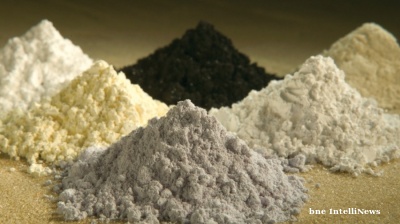The Statistical Office revised up the first-quarter GDP growth for Hungary to 2.0% quarter on quarter. The strong start and details suggest we are likely to see the economy growing by around 7.4% this year.
Surprises everywhere
The strong quarterly based GDP growth in the first quarter of 2021 was more than surprising – almost shocking in a positive way. The Hungarian Central Statistical Office was able to raise that with an upward revision to the first-quarter performance, and now we know the details behind the surprise.
We cannot point to one single sector being responsible for the strong activity on the production side. Industry had a rollercoaster-like first quarter based on high-frequency data, suggesting moderated growth. In contrast, industry grew by 3.1% q/q from a value-added perspective, mainly driven by manufacturing. The construction sector was expected to show a mild deceleration based on monthly output data. But the value-added data showed us a 6% q/q rise in this sector.
Even though we forecasted a significant deteriorating of services activity due to the stricter lockdowns during the third wave, we were wrong. Compared to the fourth quarter of last year, services rose by 2.2% q/q, fuelled by information, communication, logistics and scientific activity. Last but not least, despite weather issues, agriculture was also able to grow.

On the expenditure side, the q/q growth profile mimics the above-mentioned widespread growth, maybe except for one thing.
Investment activity, which we thought would be behind the significant upside surprise in GDP growth, disappointed. It registered a 0.6% q/q drop in 1Q21. All other sectors improved. Household consumption slowed but produced a 0.9% q/q growth, while government consumption remained strong at a 2.6% q/q pace of increase. The strong consumption was supplied from inventories, as it had a significant negative contribution to GDP growth. This means a considerable upside potential for the re-opening of activity.
To round out the set of positive surprises, we need to talk about Hungary’s export activity. Exports of goods and services increased by 2% q/q and 2.2% q/q respectively, despite the travel ban and shipping and supply chain problems. Imports, on the other hand, were significantly weaker for both goods and services. This translated into a significant positive contribution to GDP growth from net exports.

What’s next?
The growth profile of the first quarter showed remarkable resilience and flexibility regarding the economic actors. This provides us with a sneak peek of what we can expect in the second quarter, where we see a set of positive impulses pushing GDP.
The most obvious one is the strengthening of the services sector alongside consumption on the final use side. With life getting back to normal, people will use their savings to buy experiences (and maybe goods too). Recreation services, travelling, arts and entertainments are all open now (with only minor restrictions) along with bars, restaurants and cafés.
As the past two quarters of consumption depleted inventories, we expect companies to stock up on inventories during the re-opening phase, boosting economic activity. Housing market programmes and infrastructural developments will fuel the construction sector. Industry remains an enigma, but all in all, we can’t see a collapse here. Last but not least, there is investment activity. Again, government projects will support this, but the upcoming turnaround from the monetary policy (i.e. rate hikes and a possible scaling back of lending programmes providing cheap money) might encourage companies to take loans before rates become higher.
All of these can translate into another 2%-ish q/q GDP rise (or even more). With the low base provided by the sudden stop of the economy during spring 2020, the year-on-year GDP growth will show us an extreme number, maybe around 17%. With such a first half of 2021, it is almost impossible for the Hungarian economy not to register record-high GDP growth for the full year. With the possibility of EU transfers coming during the second half and the general election approaching, we see additional booming economic factors during the second half of 2021. With all that said, we see the Hungarian economy registering a 7.4% GDP growth this year.
Peter Virovacz is ING’s chief economist for Hungary. This note first appeared on ING’s THINK.ING portal here.
Content Disclaimer: This publication has been prepared by ING solely for information purposes irrespective of a particular user's means, financial situation or investment objectives. The information does not constitute investment recommendation, and nor is it investment, legal or tax advice or an offer or solicitation to purchase or sell any financial instrument. Read more
Opinion

COMMENT: Hungary’s investment slump shows signs of bottoming, but EU tensions still cast a long shadow
Hungary’s economy has fallen behind its Central European peers in recent years, and the root of this underperformance lies in a sharp and protracted collapse in investment. But a possible change of government next year could change things.

IMF: Global economic outlook shows modest change amid policy shifts and complex forces
Dialing down uncertainty, reducing vulnerabilities, and investing in innovation can help deliver durable economic gains.

COMMENT: China’s new export controls are narrower than first appears
A closer inspection suggests that the scope of China’s new controls on rare earths is narrower than many had initially feared. But they still give officials plenty of leverage over global supply chains, according to Capital Economics.

BEYOND THE BOSPORUS: Consumed by the Donald Trump Gaza Show? You’d do well to remember the Erdogan Episode
Nature of Turkey-US relations has become transparent under an American president who doesn’t deign to care what people think.


